2006.06.01 09:56
31 May
After lunch we took a short walk along the beach past the World War II bunker. Although the beach was replenished last year, the shoreline is much closer to the seaward face of the bunker this year (and it wasn't even high tide).
On the way back to Philadelphia we always drive through some of Cape May and Wildwood. In Cape May this building...

...is presently being converted into "unique condominiums," and in Wildwood this building...
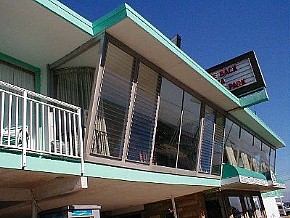
...no longer exists.
| |
2006.05.30 10:00
...genuinely and unexpectedly missed
"The currency was debased, trade languished, and the countryside swarmed with bandits and vagabonds. Many of the country's enterprising young men emigrated to New Spain. The result was a labor shortage--one that Philip exacerbated by expelling some 275,00 Moriscos from the peninsula between 1609 and 1614. It was an emotionally popular move, but once the Moriscos were gone they were genuinely and unexpectedly missed, for they had been hardworking farmers, laborers, and artisans and it was not easy to replace them."
Mary Cable, El Escorial (New York: Newsweek Books, 1971), p. 102.
2006.05.28 12:28
bibliopolum
Ludwig's dissertation on reenactment
Trumbauer Architecture Tours
Nudist Camp at the Philadelphia Musuem of Art
"a moldy paper on mildew"
The King pf Prussia Marble Trail
De Spectaculis II
The Marriage of Twisted and Column
Here a Versailles, There a Versailles, Everywhere a Versailles, Sigh
The Promenade Architecturale Formula
The History of Terrorism in Film
Pilgrimage, Reenactment and Tourism
A Quondam Lenni Lenape Land
Learning from Lacunae
Creating One's Own Virtual Museum of Architecture
Ichnographia Romaphilia
The Bilocating Barnes Foundaton
An Architecture of Removement
How Did This Happen Revisited
2006.05.27 11.27
VALU-PLUS
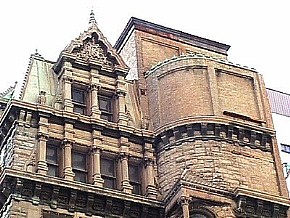 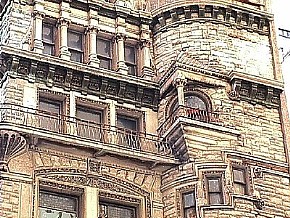 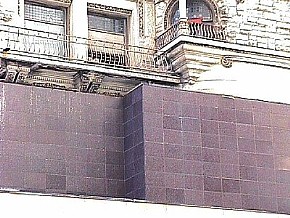 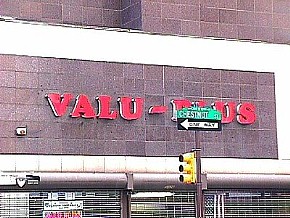 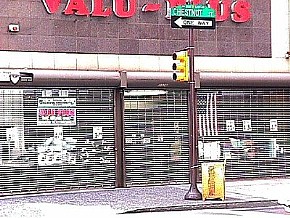
| |
2006.05.23
Villa Savoye at the Dominican Motherhouse
...annexation; a totally fictitious client; who knows what else. ...a narrative inspired by the graphics.
2365
2006.05.22 07:38
Yo-Culture-Pics 4 Ma-Culture-pics
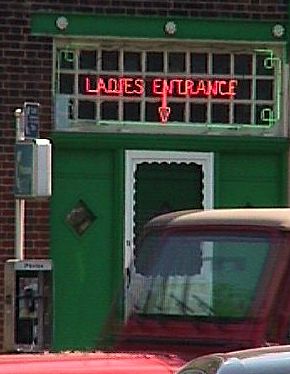
2006.05.22 06:55
genius loci?
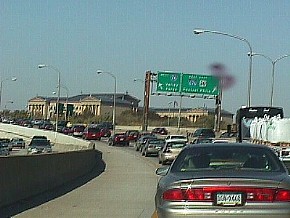 love among the ruins
love among the ruins
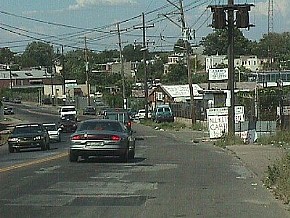 ancient Lenni Lenape trail leading to the summer solstice celebration site
ancient Lenni Lenape trail leading to the summer solstice celebration site
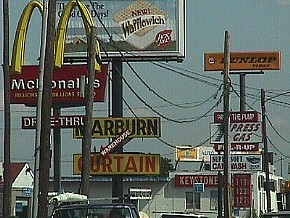 $1.13 a gallon for regular?!?
$1.13 a gallon for regular?!?
| |
2006.05.21 19:05
Threadbare Central
I love having Sunday brunch with The McLaughlin Group...
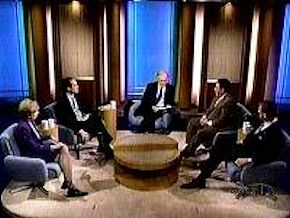
...and maybe I'll have pizza tonight with Desperate Housewives...
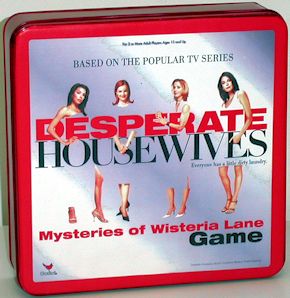
...and then maybe I'll start The Fashionable Self Portrait Series or Quondam Architecture in a Tube.
2006.05.21 18:28
reading KINETIC ARCHITECTURE lately?
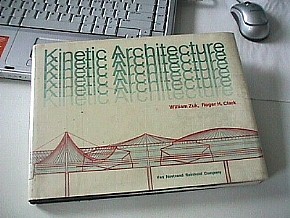
. . .added to Quondam's library via eBay a couple of months ago.
Even if the book isn't read much these days, it is certainly reenacted a lot now. . .
William Zuk and Roger H. Clark, Kinetic Architecture (New York: Van Nostrand Reinhold Company, 1970)
From the front flat of the dust jacket:
"Surely our present task is to unfreeze architecture--to make it a fluid, vibrating, changable backdrop for the varied and constantly changing modes of life. An expanding, contracting, pulsating, changing architecture would reflect life as it is today and therefore be part of it"*
Kinetic Architecture captures the very essence of the above statement. But more than that, it gives every architect, engineer, city planner and builder a working knowledge of emerging, evolutionary concepts and ideas which are flexible to the speed, scale, and nature of change today.
Fully evaluating the bold and exciting potentials of architecture which can accommodate time-change effects, the authors provide a wealth of supporting examples which show how man can now, for the first time, construct a physical environment that is adaptable to his specific needs.
Denouncing the "monument syndrome of static, permanent architecture" in light of current needs, the authors persue new architectural mediums which would remain responsive to a broad spectrum of changing conditions. Such buildings might expand, contract, or even move as pointed up in the book's numerous examples and illustrations.
Here you'll gain new insights into the principles and possibilities of dynamic self-erecting structures such as the United States Pavilion on Osaka, Japan . . . incremental structures which have the potential to meet changing pressures through additive, substractive, or substitutive capabilities (which suggest new ideas for the mobile home industry) . . . disposable buildings--a possible solution to cost-benefit problems . . . the merits of a "second-hand" building market based on the capabilities od reversible architecture . . . and many more equally fascinating innovations.
*"Editorial" by Jan Rowan, Progressive Architecture
| |
2006.05.21 17:02
a quondam two-faced celebration
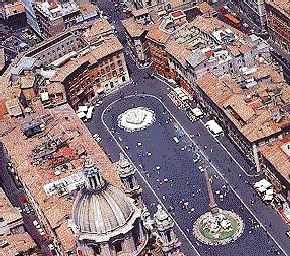
I wish you were here.
1972: Laszlo Toth attacks Michelangelo’s Pieta.
1938: The death of Edward T. Stotesbury.
1923: The birth of Prince Rainier II of Monaco
1502: The discovery of St. Helena Island.
The feast of Sts. Constantine and Helena.
The third Agonalia--the festival of Veiovis, "one of the oldest of the Roman gods. He is a god of healing, and was later associated with the Greek Asclepius. He was mostly worshipped in Rome and Bovillae in Latium. On the Capitoline Hill and on the Tiber Island temples were erected in his honor. In spring, goats were sacrificed to avert plagues." --Micha F. Lindemans
I've know a little about the Agonalia since April 1998 when I translated all the Latin labels of Piranesi's Ichnographia Campi Martii. In 1972 I often walked through the room where Edward T. Stotesbury died, but I didn't know that then--now part of a little field closest to the columns. I play Napoleon at St. Helena nearly every day, and I didn't win during lunch today. Today is the last day to see Princess Grace's wedding dress--the first time I saw it was late winter/early spring 1972.
Constantine the Great died in a suburban villa of Nicomedia, today's Izmit, Turkey, 22 May 337.
"4. all the errors that remain herein"
2006.05.21 15:15
PHILADELPHIA!!
Instead of our more usual postprandial drive, Otto and I took a postprandial walk in Pennypack Park, the fist time this year. We've kind of routinely taken the same walk during the warmer months since 2001. All the geese were out of the creek and resting under the trees, some mallards just sitting there too, and lots of little geeslings. And then a brother and sister sitting on a rock where the creek babbles a bit. And then, as we approached the two-year-old 'no mow zone' thoughts of old Swedes entered my mind. I stopped and looked around and yes this was always my favorite view during our walks--favorite as in "subtle pleasant sensation."
We didn't walk all the way to "the point" this time because Otto didn't want to; I wanted to though. So we went straight to the bridge, though Otto decided to sit on the bench just before the bridge, and I went on to look for tiny, tiny fish. Then a horseback rider came along and it was amazing to feel the weight of the horse on the bridge as it strode barely four feet behind me. It was around 5:40pm--was that before or after Barbaro fractured his leg?
Since not going to "the point" made our walk a little too short, I suggested we walk back the way we came along the creek instead of taking the main trail straight back to the car. Otto was fine with that, and then again the thought of old Swedes entered my mind at my favorite view--it's that vantage of the far western sky that I like most.
Now it's neat to realize that old Swedes took walks in Pennypack Park too, even before there was a Philadelphia or a Pennsylvania.
|